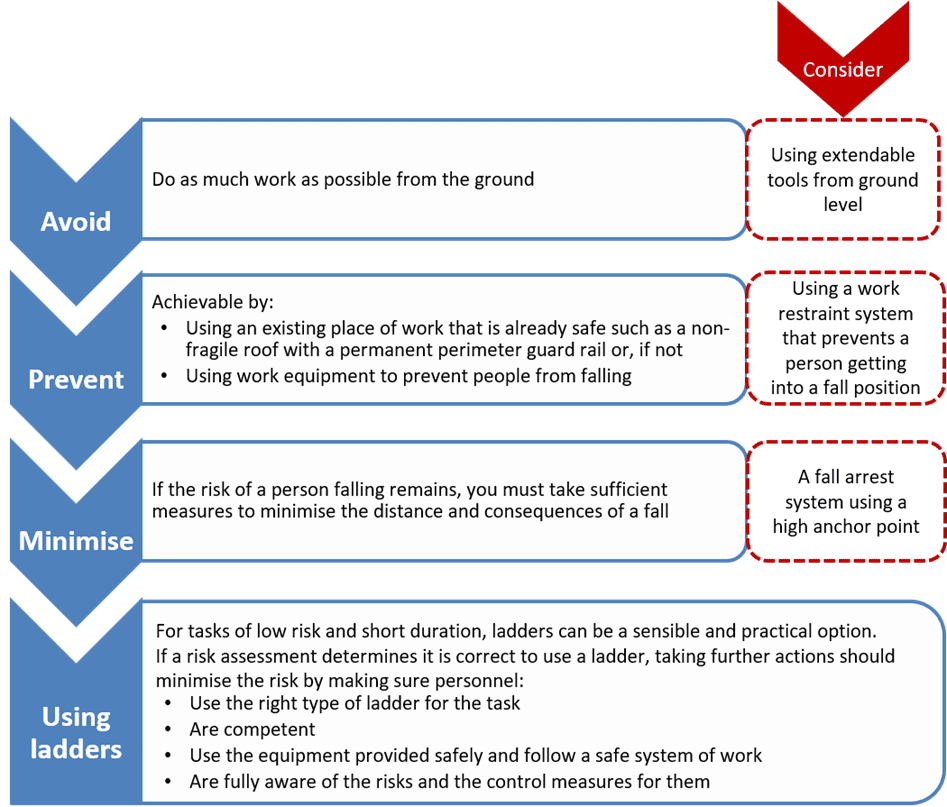Any work at height must be risk assessed, properly planned, supervised and carried out by competent people with the skills, knowledge and experience to do the task. Personnel must use the right type of equipment for working at height.
If there is a risk of falling that could result in injury and before any work is carried out, the hierarchy ‘avoid, prevent, minimise’ should be used:
- Avoid work at height where it is reasonably practicable to do so
- Where work at height cannot be avoided, prevent falls using either an existing place of work that is already safe or the right type of equipment
- Minimise the distance and consequences of a fall, by using the right type of equipment where the risk cannot be eliminated

For the use of ladders for low-risk, short duration tasks, the Health and Safety Executive (HSE) has defined a short duration as:
‘tasks that take less than 30 minutes’
Incident commanders should consider measures that protect everyone who is at risk by considering collective protection systems before measures that only protect the individual such as personal protection measures such as a harness. Ensure when work is being carried out to continually monitor weather conditions.
